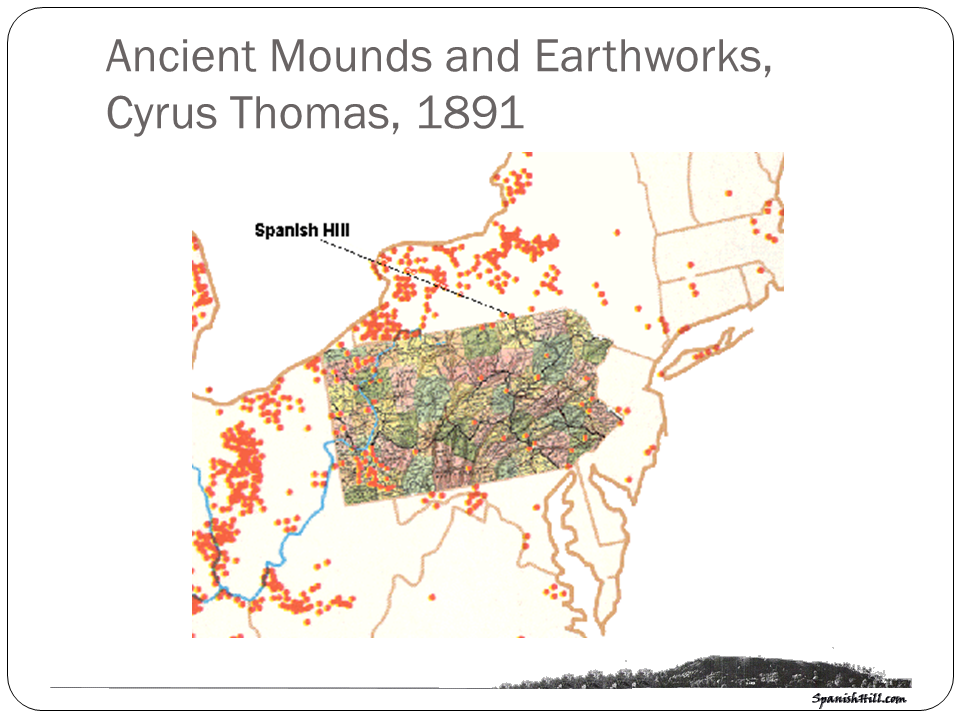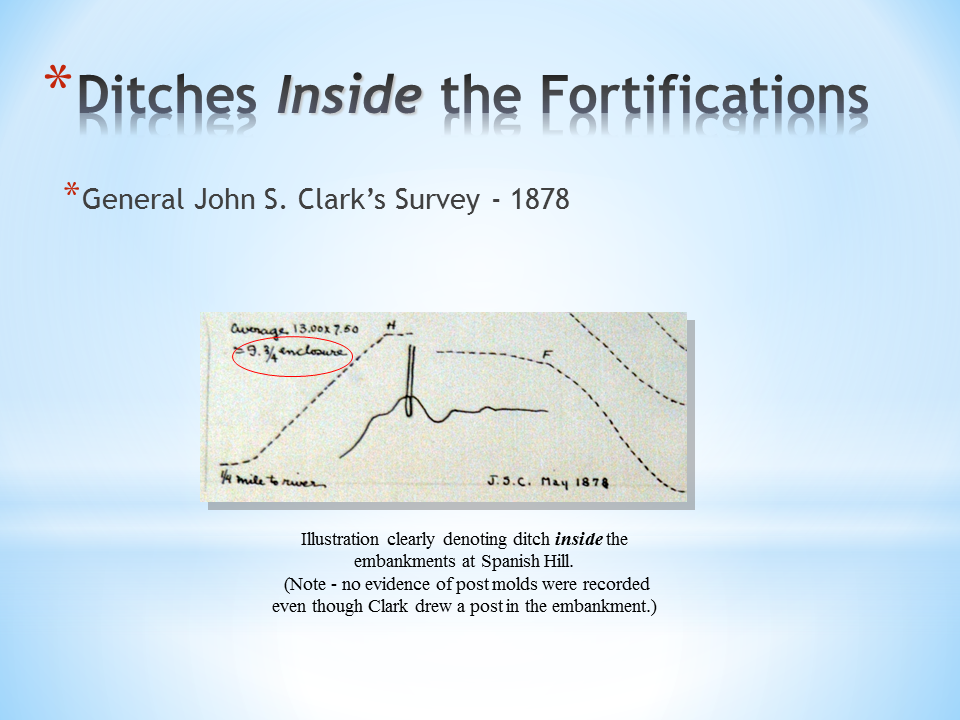This is how the hill looked in the 1980's - and in this image you can
see the clearing of ten acres that was enclosed with earthen
embankments that were still visible up until around 100 years ago.
The earthen embankments are also most likely the reason why the hill became known as "Spanish Hill."
Here is the earliest reference found to date of the embankments found atop Spanish Hill:
The next reference is the following:
In
fact by 1891, Ancient sites were being erased by settlers, growing
towns and cities and farmers and the Smithsonian made a report of all
Ancient Earthworks in the U.S. - Here is a map of Pennsylvania - and
Spanish Hill is clearly shown there.
In fact in their report, Spanish Hill was noted to be an "Enclosure" which is a clear reference to the embankments seen there.
A
local history book, "Early Times on the Susquehanna" actually even
tells us about how the embankments were lost to the farmer's plow:
Even as late as 1916 - people were still referencing the embankments or some evidence of where they had been:
Moorehead was familiar with hilltop enclosures like what was found at Spanish Hill - here is another hilltop enclosure found in Ohio that he excavated called Fort Ancient:
Early on the embankments were thought to be defensive, (thus the name "Fort Ancient") but today it is understood that that interior ditches inside of the embankents define an ancient sacred space. Notice also that it has a river running to it's west. While Spanish Hill is much smaller, the enclosure structure on the top is a match with this site shown here.
These are maps drawn during the 1916 Expedition by Moorehead's team of Spanish Hill:
In
1878 Mr. I.P Shepard of Waverly, NY, presented a paper for the Tioga
Point Historical Society. Mrs. Murray in the "Old Tioga Point and Early
Athens" goes on to tell us that he created the following illustration
with the help of Charles Henry Shepard, whose residence, throughout a
long life of eighty seven years, was close to the hill and who
remembered "distinctly" the "Spanish Ramparts" before the plow of an
overzealous farmer nearly leveled them to the ground. Drawing by Mr. I.P
Shepard to illustrate fortifications on Spanish Hill. (Murray 1908:58)
"Mr. C.H.Shepard described these fortifications as consisting of an
embankment with a trench behind, giving a height of four or five feet
inside. When he was a boy and first visited them, about 1820 or 1825,
large trees were growing in the trenches, showing that a long time had
elapsed since they were used.
The
double lines in the diagram above indicate portions still clearly
defined, and were evidently made much higher to protect those portions
of the hill that were easily assailable? The dotted line inside this
angle, Mr. Shepard thinks indicated a palisade for greater security?"
(Murray 1908:58)
General John S. Clark
visited Spanish Hill in May of 1878, and described what he saw in his
notes: "Rises abruptly from the surrounding plain about 200 feet with a
nearly level platform top of about 10 acres enclosed by the palisades
which appear to have been banked up on the outside and in." (Murray, ed.
1931:32)
Click
here to learn about Clark's research that places the first white
explorer, Etienne Brule at Spanish Hill in 1615 at the nation of
Carantouan.
Spanish Hill: A Sacred Space
We have surveys
and historical accounts of what archaeologically speaking refer to
"Sacred (ceremonial) Spaces" built by ancient Native Americans all
around North America as well as at Spanish Hill. Unlike a village or
fortified defensive space that sometimes have ditches - like moats
around them (for defense) - ceremonial spaces have ditches placed inside
of earthen embankments. Below is an actual illustration of the ditches
on Spanish Hill in 1878:
Here is one of many references to these ditches at ancient sites:
Interestingly,
there is more to connect to Spanish Hill here as you will see two
different references to who could actually go into the enclosure of a
sacred space:
And
here is our own local historian referencing the behavior of local
Native Americans when the settlers asked them to go up on the hill:
Spanish Hill a sacred space was used just as it is described in the story of Carantouan by Brule:
It is important that we can understand just as the prior image states, after the ceremonies were complete and the decision was made - Brule states that they had to go out and collect the warriors for the battle at the villages and to arm them...click here to learn more.


















